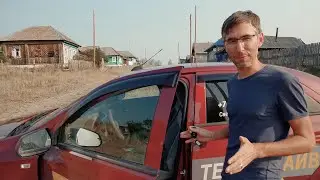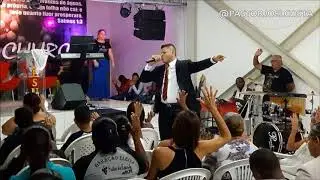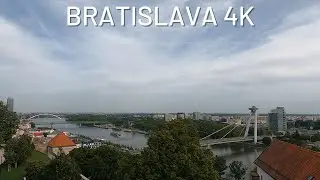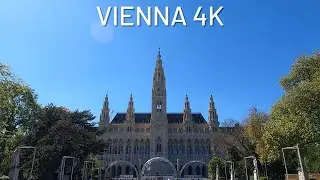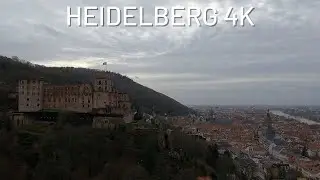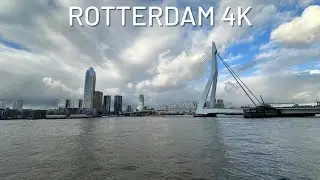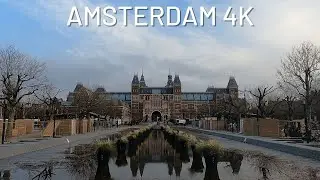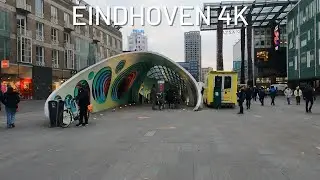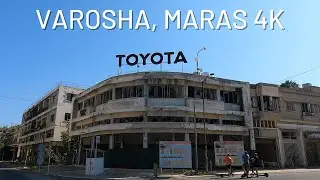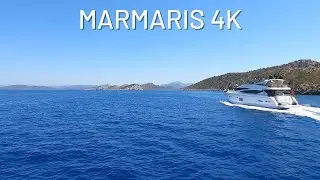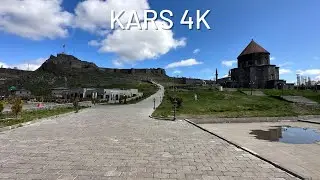Rotterdam 4K - Downtown Walking Tour
Afternoon walking tour of downtown Rotterdam on a cold winter day. This walk starts by Blaak (Binnenrotte Plein) and continues along with the main streets, landmarks, canals and squares of Rotterdam. Important landmarks of Rotterdam such as Markthal, Cube Houses, Oudehaven, Willemsbrug, Nieuwe Maas, de Boeg, Maritime Museum (Leuvehaven), Witte de Withstraat, Eendrachtsplein, Beurs, Erasmusbrug, and Cruise Terminal Rotterdam are also walked by and the tour ends with the Holland Amerikaplein and the panoramic view of Rotterdam and Euromast .
Rotterdam is the second-largest city in the Netherlands after the national capital of Amsterdam. It is in the province of South Holland, part of the North Sea mouth of the Rhine–Meuse–Scheldt delta, via the "New Meuse" inland shipping channel, dug to connect to the Meuse at first and now to the Rhine.
Rotterdam's history goes back to 1270, when a dam was constructed in the Rotte. In 1340, Rotterdam was granted city rights by William IV, Count of Holland. The Rotterdam–The Hague metropolitan area, with a population of approximately 2.7 million, is the 10th-largest in the European Union and the most populous in the country.
A major logistic and economic centre, Rotterdam is Europe's largest seaport. In 2022, Rotterdam had a population of 655,468 and is home to over 180 different nationalities.
Rotterdam is known for its university, riverside setting, lively cultural life, maritime heritage and modern architecture. The near-complete destruction of the city centre in the World War II Rotterdam Blitz has resulted in a varied architectural landscape, including skyscrapers designed by architects such as Rem Koolhaas, Piet Blom and Ben van Berkel.
The Rhine, Meuse and Scheldt give waterway access into the heart of Western Europe, including the highly industrialized Ruhr. The extensive distribution system including rail, roads, and waterways have earned Rotterdam the nicknames "Gateway to Europe" and "Gateway to the World".
https://en.wikipedia.org/wiki/Rotterdam
—
Cube houses are a set of innovative houses built in Helmond and Rotterdam in the Netherlands, designed by architect Piet Blom and based on the concept of "living as an urban roof": high density housing with sufficient space on the ground level, since its main purpose is to optimise the space inside. Blom tilted the cube of a conventional house corner upwards, and rested it upon a hexagon-shaped pylon. His design represents a village within a city, where each house represents a tree, and all the houses together, a forest. The central idea of the cube houses around the world is mainly optimizing the space, as a house, to a better distribution of the rooms inside.
https://en.wikipedia.org/wiki/Cube_house
—
The Erasmusbrug is a combined cable-stayed and bascule bridge, construction began in 1986 and was completed in 1996. It crosses the Nieuwe Maas in the centre of Rotterdam, connecting the north and south parts of this city, second largest in the Netherlands. The bridge was named in 1992 after Desiderius Erasmus, a prominent Christian Renaissance humanist also known as Erasmus of Rotterdam. The Erasmus Bridge is Rotterdam's most important landmark and is even part of the city's official logo.
https://en.wikipedia.org/wiki/Erasmus...
—
The Markthal is a residential and office building with a market hall underneath, located in Rotterdam. The building was opened on October 1, 2014, by Queen Máxima of the Netherlands. Besides the large market hall, the complex houses 228 apartments, 4,600 m2 retail space, 1,600 m2 horeca and an underground 4-storey parking garage with a capacity of over 1200 cars.
https://en.wikipedia.org/wiki/Dam_Square
#asmr #rotterdam #rotterdam4k #netherlands #netherlands4k #nederland #nederland4k #holland #holland4k #southholland #zuidholland #holland #hollanda #walkingtour #walkingtours #asmrsounds #asmrsound
